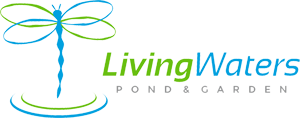Balancing the Water in Ponds and Large Outdoor Fountains
By Amber Liddell
If you have a pond, you will need to know how to keep the water clean. Small fountains have recirculating pumps which makes keeping the water clean much easier. Regardless of pond or fountain, it is useful to have a basic understanding of how to keep the water clean and balanced.
The term “biological balance” simply means establishing a healthy eco logical balance between plants, fish, and other aquatic life in the pond. Various factors affect ponds, includ ing the size and depth, the amount of sunlight or shade, water tempera ture, water movement, pollutants in the water, and the kind and number of plants and fish. Depending on how these factors affect your pond, it may take anywhere from several weeks to several months to achieve this balance. Once the pond water is balanced, it will remain relatively clear provided you don’t add fish, plants, or other pond life. Of course, if you do add any of these, you will need to take other measures to keep the water clear. Usually, you can do this just as you would with a swimming pool, by incorporating a mechanical or biological filter, using chemicals periodically, and routine cleaning.
How it Works
Think of your pond or outdoor fountain as a small, self-contained ecosystem. When you introduce aquatic plants, they draw nutrients (nitrates and phosphates) directly from the water and also the soil-if the plants are potted. These nutrients, combined with sunlight, cause the plants to grow and release oxygen into the water in a process known as photosynthesis. When fish are introduced, they consume the oxygen produced by the plants. To some measure, the fish rely on the plants as a source of food, and so keep excessive growth of the plants in check. In turn, the fish provide nutrients (carbon dioxide through breathing and nitrogen from fish wastes) to promote plant growth. Surface plants such as water lilies also benefit fish by providing shade during the hot summer months and controlling the water temperature. Plants give fish a place to hide from other fish, cats, raccoons, birds, and other predators. For their part, fish help control populations of plant-eating insects. Scavengers such as snails and tadpoles also help balance the pond by consuming excess fish food, algae, and organic debris. When the numbers of fish and plants in the pond are stabilized (not too many of one or the other), the pond is in biological balance.
The reason balanced ponds are relatively clear is because the plants and fish in tandem help control the algae growth that can turn the water cloudy.
Controlling Algae
When you first add water to your pond or water fountain, it will be crystal clear. After a few days, however, the water will turn murky, taking on a greenish tinge. This is caused by microscopic single-celled free-floating algae. Unless you take measures to control these creatures, you will end up with pea soup.
Starting the Process
To achieve an initial balance in a new pond, follow these procedures:
Testing the Water
When you first fill the pond with water, it may contain chemical and mineral pollutants that are toxic to fish and plants. The chemicals include chlorine, chlorine dioxide, chloramines, ammonia, and others present in tap water. Also included are various pollutants from pond-building materials, and poison ous chemicals that may have been washed or blown into the water from outside sources. Free chlorine in tap water usually dissipates after the water has stood for a few days. Other chemicals, such as a combi nation of chlorine and ammonia, take much longer to break down. Before introducing plants or fish to the pond, test the water. After filling the pond, wait at least one week before testing. You can detect the presence of most toxic substances in water by testing for pH, ammonia, chloramines, nitrites, and water hardness. The pH is a measure of acidity or alkalinity. The scale ranges from 0 (highly acid) to 14 (highly alkaline), with 7 being neutral (indicating pure water). Healthy pond water ranges in pH from 6.5 to 8.5 Water-testing kits are available to test one or all of the conditions above. You can buy these kits at pet shops, garden suppliers, and pond dealers. Or you can order them from water-garden catalogs. The kit instructions usually tell you which water conditioners to use to correct the problem. Some pond dealers and pet shops also provide compre hensive water-testing services, and can advise you on proper treatment.
Correcting Water Conditions
A variety of water-conditioning treat ments are available to balance the pH and remove toxic substances from ponds. But you should use them only if tests indicate that they are needed. Test the water for pH and presence of chlorine, ammonia, and other toxic substances. Simple tests kits for monitoring water quality are available at pet shops and water garden suppliers or your favorite online dealer. If necessary add a water conditioner to remove chlorine and other harmful chemicals in the water. Follow label directions. If algae is present, treat the water with algaecide. Remove leaves and other debris from the pond with a leaf skimmer.
